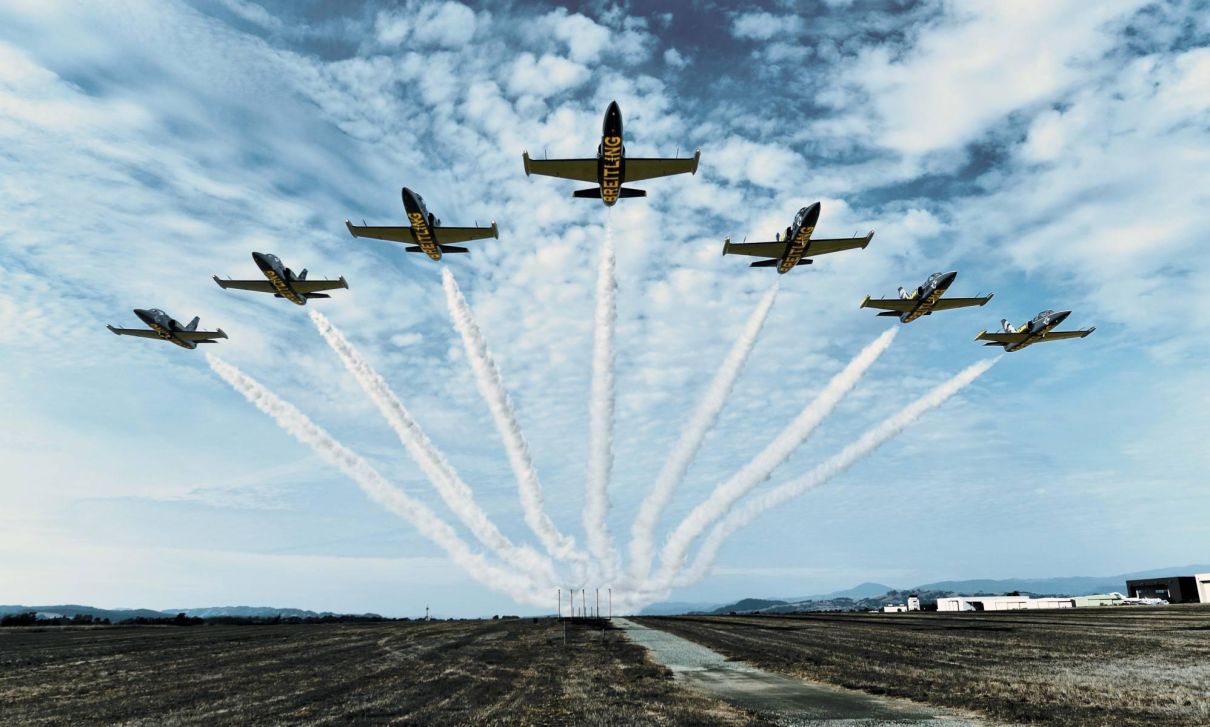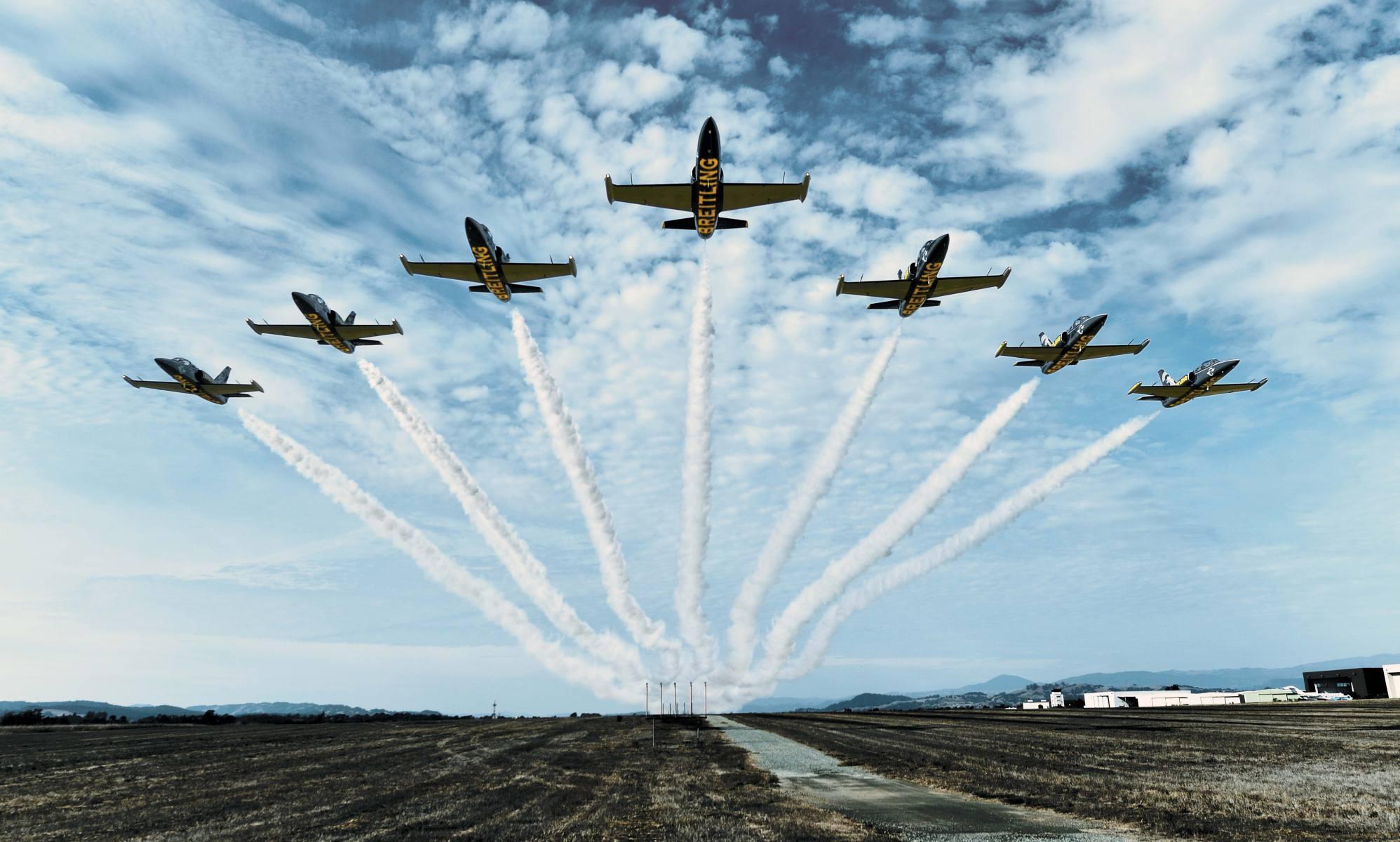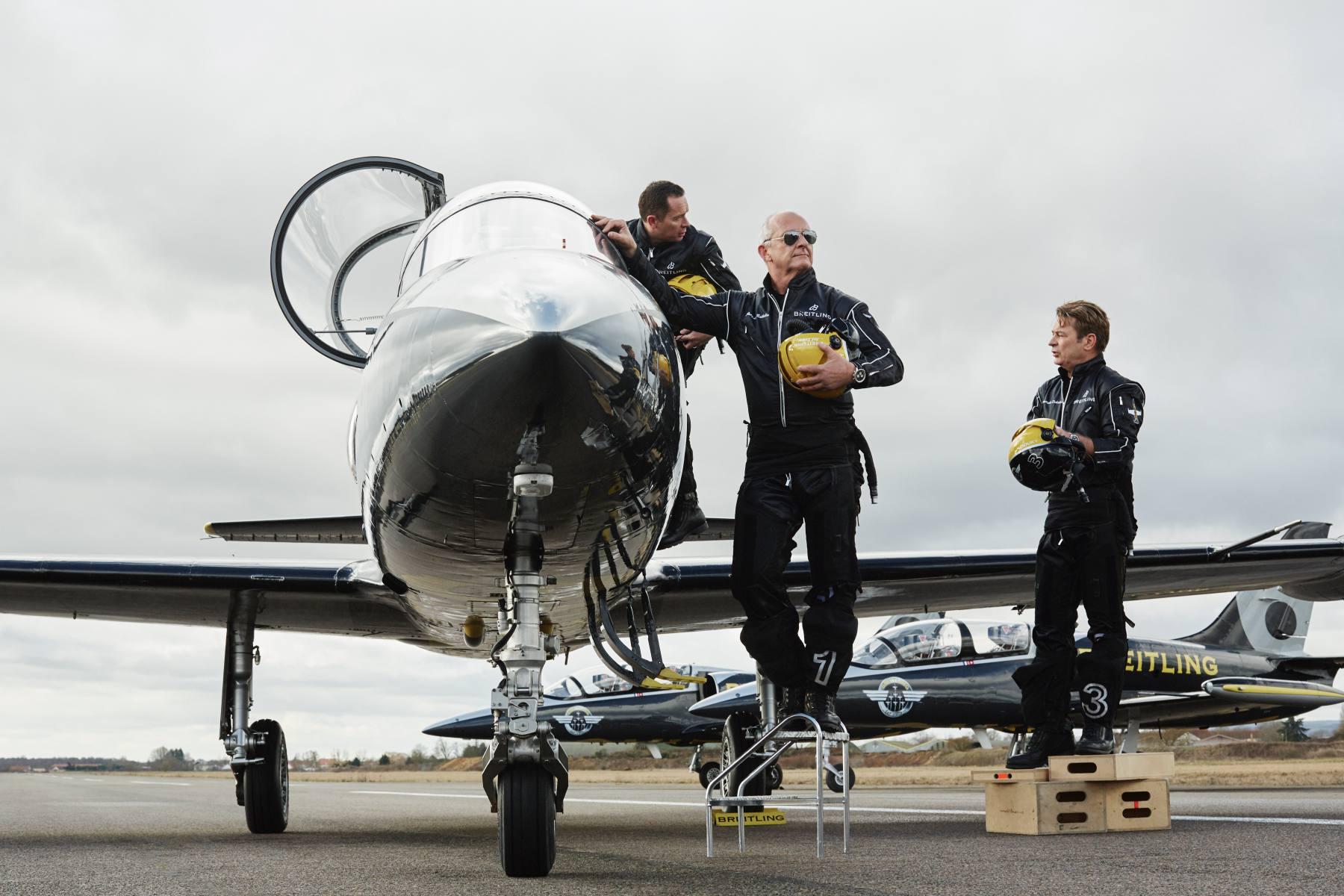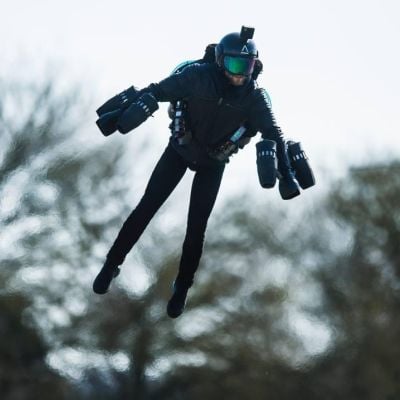A Flight Aboard A Fighter Jet

Europe’s only professional civilian aerobatic jet team is ready to take passengers through some manoeuvres.

It is one thing to find oneself suspended upside down in a fighter jet at 600km/h; and quite another to find oneself in that position and just 2m away from the wingtip of another fighter jet. “It’s the way I like to fly,” says Jacques ‘Speedy’ Bothelin, founder and team leader of the Breitling Jet Team, based in Dijon, France. It is Europe’s only professional civilian aerobatic jet team and one of the few ready to take a passenger by special arrangement through some manoeuvres.
While a fighter-jet experience may be a commonplace ‘red-letter-day’ experience, being taken through loops, barrel rolls and close-formation flying is not. “I mean,” Bothelin adds, “I could have switched to an airline job, perhaps, but this is the difference between flying a racing car and driving a bus. Aerobatic flying is like music. You must master your instrument and decide what to play, but the object is to create emotion.”
Primarily the emotion he’s aiming to generate is down on the ground, among the people who meet in their thousands to watch their displays. All those tight, dramatic turns are less about having to keep their display within a certain airspace, as aiming to keep the audience’s attention; slack off for more than 10 seconds, Bothelin says, and they’re off to buy an ice cream. But when it comes to taking a passenger up (the Breitling Jet Team flies two-seater L-39 Albatros trainers, designed to train fighter pilots) the idea is to give them much the same experience as the team has when performing a routine.

At least to a point. To prevent discomfort of the kind that comes from not having the years of conditioning that allows the body to take the impact of high g-forces, the manoeuvres are conducted at a speed that limits said forces to around 4G. And that’s certainly enough to feel that one’s internal organs are momentarily being rearranged. A neatly folded paper sick bag is provided just in case. But, to date, only one passenger has felt the need to use it.
Passengers wear a helmet and full fly-suit (without the over-lapping g-suit) and must go through a pre-flight briefing that gives them an idea of what to expect. This includes: which pilot they will fly with (most are ex-French Air Force fighter pilots who flew in Mirages and Jaguars for years, some flying in combat during the Balkan conflict and the first Gulf War); what position in the flight of seven aircraft they will be in; a basic overview of the manoeuvres that the aircraft will be put through; and, perhaps most importantly, what to do in an emergency. This is simple: react to the words ‘eject, eject, eject!’ by reaching down between their legs, grabbing a red handle with both hands and squeezing the triggers, after which everything is automated. But it’s a daunting prospect all the same.
It has happened, once. In 2012, over Holland, the aircraft of Bernard Charbonnel (the number-two pilot, flying right-inside of the team leader) experienced massive vibrations of a kind that forced him to shut down the engine to prevent it from exploding. Over the next 40 seconds he was busy making a mental note of the instrument readings, surveying the landscape and pointing the aircraft into a descent away from populated areas below. Then he gave that ominous order to his passenger. Both made it down to earth comfortably. Fortunately, this incredibly rare event was on a training flight and Charbonnel’s passenger was one of the Breitling Jet Team technicians.
“Of course, you’re still surprised it’s all happening, because for all of your training you never expect it to actually happen,” concedes Charbonnel, who was flying again the next day. “But you’re so busy with certain things you need to do that you don’t have time to think about your situation. When you train for this kind of thing, it’s all written down in a book. And you follow the book. You’re too busy to be scared. For the technician it was not a good experience: 40 seconds of pure stress.”
What passengers are much, much more likely to experience is half an hour or so of pleasingly stressful thrills that no roller-coaster can match: not just the rough and tumble of the actual manoeuvres (back on ground it may take a few minutes to allow the echo of the physical sensations to pass and the adrenaline levels to abate) but equally an appreciation for the gracefulness and sheer potential of flight at speed unencumbered by the more lumbering, more domestic, surroundings of some trans-oceanic jet liner. Plus, of course, an equally fine appreciation for the talent of the flyers at the controls. This is as close as one can get to sharing in the skills and experience of more famous military aerobatic teams such as the UK’s Red Arrows or the Blue Angels from the US. During the Jet Team’s recent US tour among more well-known names to sit in the passenger seat were baseball players Ken Griffey and Jake Marisnick, and golfers Morgan Hoffman and Suzann Pettersen.
“We essentially take you through the first phases of what we would do during a display, so the experience is pretty authentic,” says Bothelin. “No routine is perfect, so, for us, every time we go up it’s a chance to assess the kind of ‘mistakes’ only we’d notice; not anticipating throttle action when you’re 10ft behind the formation, for example; nothing that’s ever dangerous. And those assessments allow us to improve the performance we give next time. After all, we are an orchestra. We’re a team, all playing in synch. We can’t be a jazz band. And, besides which, we all love the job. For us it’s a kid’s dream come true.”
Contact the Breitling Jet Team at
This article originally appeared in Billionaire's Discovery Issue, September 2018. To subscribe contact









